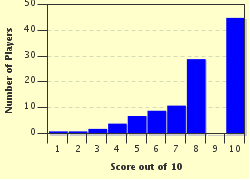Quiz Answer Key and Fun Facts
1. Though this grain can be eaten in a variety of ways (including your morning cereal), its biggest claim to fame is as the main ingredient of some rather heady beverages.
2. This tiny pseudocereal from South America, considered one of the healthiest foods on the market, has become rather fashionable in recent times.
3. Among its many uses (which, of course, include various kinds of popular breakfast cereal), this brightly-coloured grain provides the ideal complement for film- or TV-watching.
4. This grain is often eaten hot for breakfast, or as part of granola or muesli mixes, and can also be used in cookies or other baked goods.
5. Pasta, bulgur and couscous are made with this variety of a very important, widely cultivated grain.
6. This very tiny ancient grain is a staple of Ethiopian cuisine, and might work its way into your breakfast as well.
7. The often dark-coloured bread made with this grain is an essential ingredient of NYC deli-style sandwiches.
8. Often associated with birds, this small, nutritious grain is an important food staple in Africa and Asia.
9. The dark flour of these triangular seeds is the main ingredient of Japanese soba noodles, northern Italian pizzoccheri and Russian blinis.
10. Without this grain - a daily staple for half of the world's population - there would be no delicious dishes such as paella, jambalaya or biryani.
Source: Author
LadyNym
This quiz was reviewed by FunTrivia editor
WesleyCrusher before going online.
Any errors found in FunTrivia content are routinely corrected through our feedback system.


